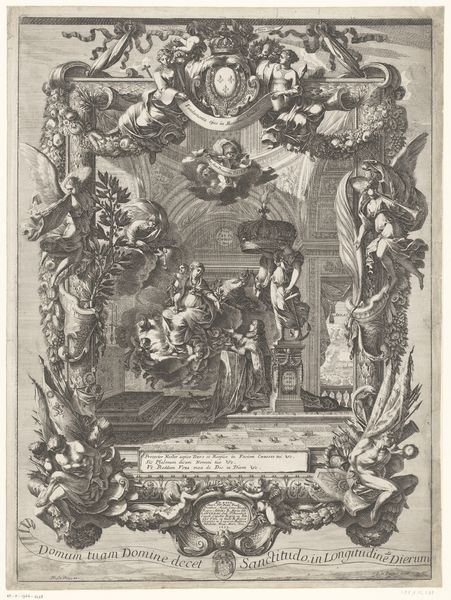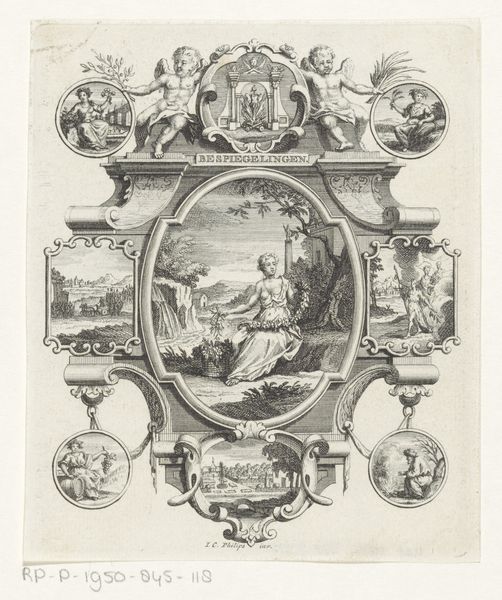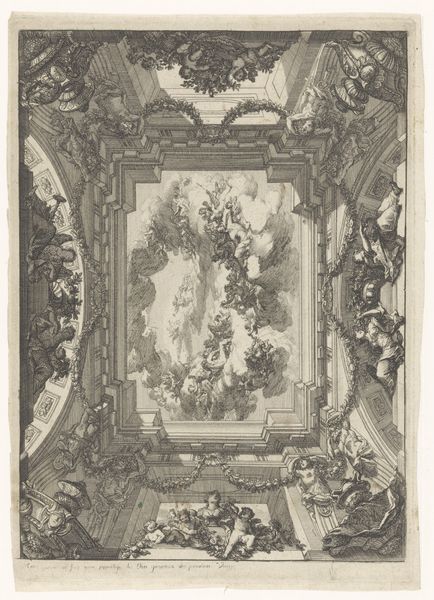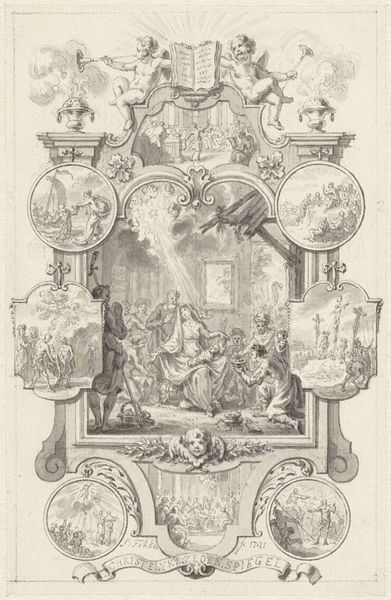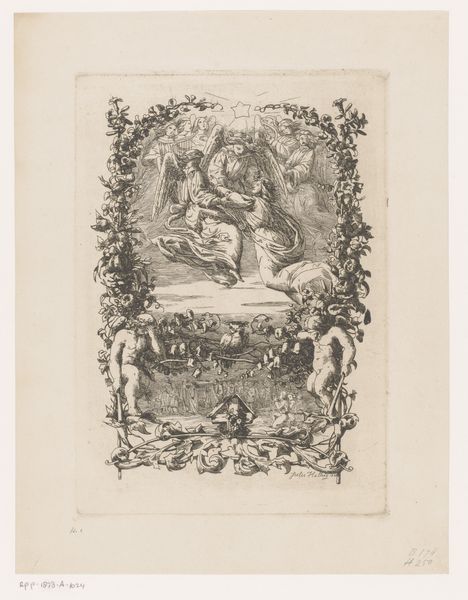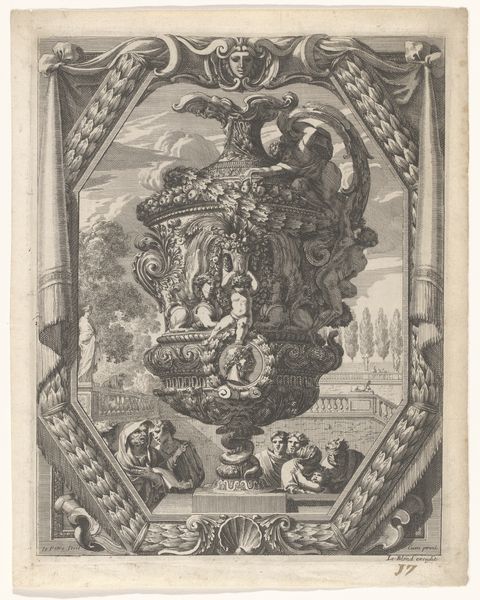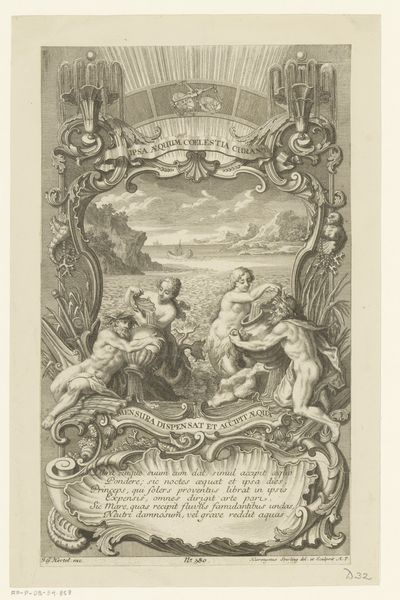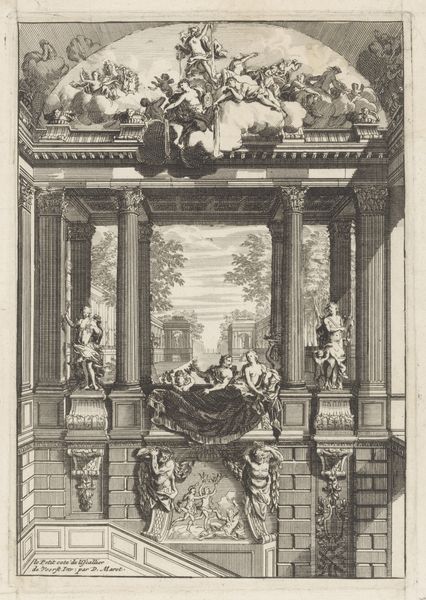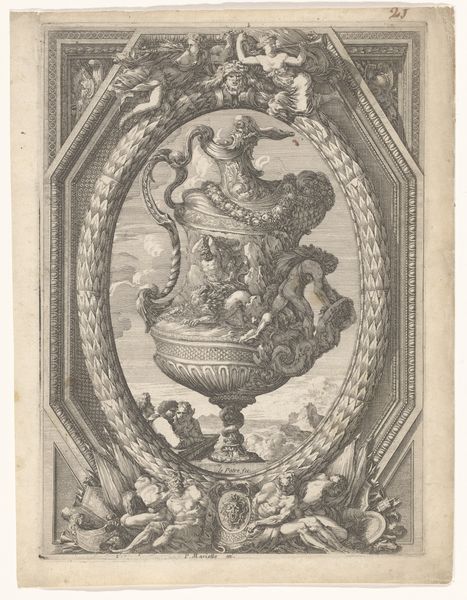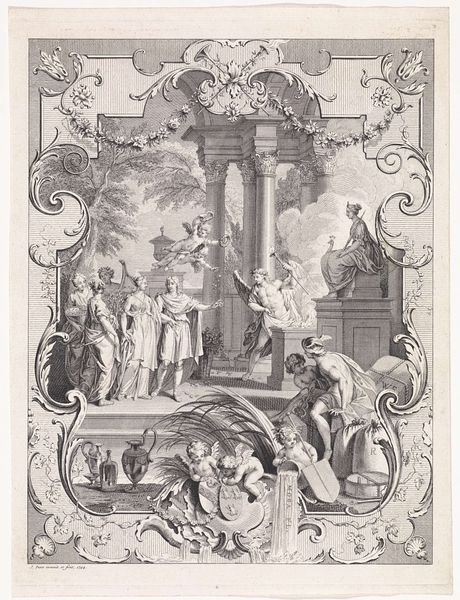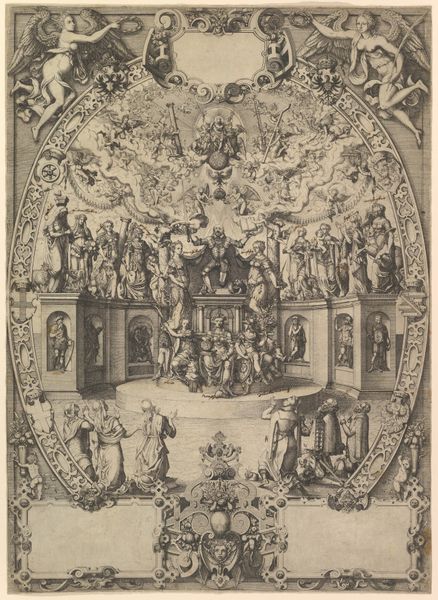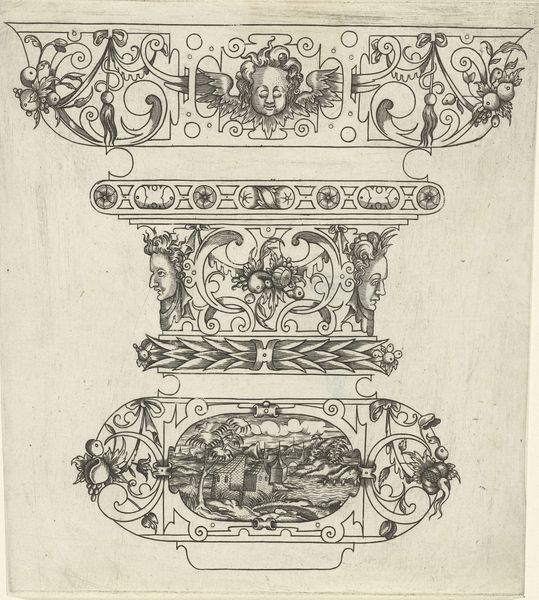
drawing, print, engraving
#
drawing
#
aged paper
#
toned paper
#
allegory
#
baroque
# print
#
pencil sketch
#
old engraving style
#
sketch book
#
personal sketchbook
#
sketchwork
#
line
#
pen work
#
sketchbook drawing
#
decorative-art
#
sketchbook art
#
engraving
Dimensions: height 301 mm, width 193 mm
Copyright: Rijks Museum: Open Domain
Curator: This drawing, "Halfronde nis en twee dessus-de-portes," created after 1703 by Daniël Marot, offers us a fascinating glimpse into the world of decorative arts. Editor: It's visually striking. The precision of the lines gives it a real sense of depth, almost architectural in its feel. Though the tone is faded with age, the forms presented feel playful and light-hearted. Curator: Absolutely, the aged paper speaks to its historical context. Marot, a Huguenot architect and designer, significantly influenced the Louis XIV style, spreading it across Northern Europe. His designs were essential for court culture, serving as stages for aristocratic identity. These designs reflect that milieu—notice the cherubs. Their prevalence is a signifier of innocence but was widely repurposed in the service of luxury. Editor: The organization is very clear. Three distinct panels, each with a vase of flowers as its focal point, set within differently ornamented borders. Semiotically, the repetition establishes a hierarchy, each variation emphasizing a particular facet of Baroque design. How can this piece speak to our current design landscape? Curator: It speaks volumes! Look beyond the surface and observe how power dynamics influenced design during that period. Royal decree governed taste, while skilled artisans from varied social strata shaped these aesthetics into realities. The rigid formalism obscures an era ripe with socio-political tension. Reclaiming those marginalized voices reveals not just the art, but its hidden historical truths. Editor: An intriguing point, because purely formally, the work utilizes stark contrasts between shadow and light to direct our gaze, culminating in those floral arrangements. Even in a preparatory sketch like this, the elegance is undeniable, showcasing an incredible eye for composition and detail. It provides a foundation upon which we can understand broader theoretical issues around authorship and intention. Curator: Seeing the hand behind the architecture enables a deconstruction of the myth-making perpetuated through powerful figures of the past. By critiquing historical aesthetic choices, modern art and design move past appropriation to become truly intersectional—design with a deeper respect and purpose. Editor: I appreciate your perspective; these competing dialogues definitely underscore how crucial diverse viewing angles can be for comprehensive understandings of artworks, both then and today.
Comments
No comments
Be the first to comment and join the conversation on the ultimate creative platform.
